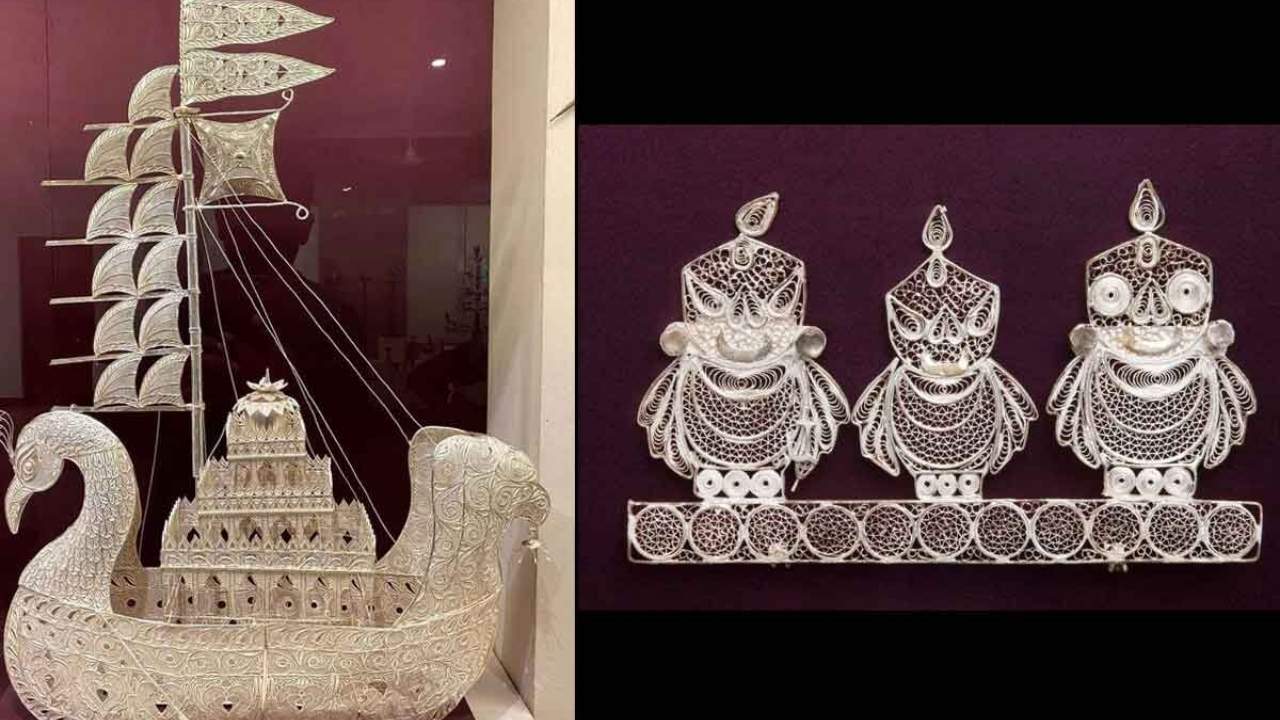Lede: CUTTACK, India – The centuries-old craft of Cuttack silver filigree, known locally as Tarakasi, has been granted the prestigious Geographical Indication (GI) tag, a move expected to protect the art form’s authenticity and provide a significant economic boost to thousands of artisans in the eastern Indian state of Odisha.

Cuttack’s Silver Filigree Craft Gets a Modern Boost
| Key Fact | Detail / Significance |
| Protected Status | The craft, officially listed as “Cuttack Rupa Tarakasi (Silver Filigree),” received the Geographical Indication tag. Geographical Indications Registry |
| Legal Protection | The GI tag prevents unauthorized production and marketing of filigree products under the Cuttack name, ensuring quality and authenticity for consumers. World Intellectual Property Organization |
| Economic Impact | The status is expected to increase artisans’ earnings, open up international markets, and combat competition from machine-made imitations. |
A Landmark Recognition for an Ancient Art Form
The Geographical Indications Registry, based in Chennai, officially awarded the GI status in March 2024 following an application filed by the Odisha State Co-operative Handicrafts Corporation Ltd. The application was submitted on behalf of the artisans who have practiced this unique art form for over 500 years.
The recognition affirms that products sold as Cuttack silver filigree must originate from the Cuttack district and adhere to the traditional, meticulous methods passed down through generations. Odisha’s Chief Minister, Naveen Patnaik, hailed the development as a momentous occasion. “It is a matter of honor for Odisha,” Patnaik stated, emphasizing that the tag “will go a long way in promoting the unique artistry of our craftsmen.” The GI tag provides a legal shield, safeguarding the craft’s identity on a global stage, similar to protections for Champagne from France or Darjeeling tea from India.
The Significance of the Geographical Indication (GI) Tag
A Geographical Indication is more than just a label; it is a critical tool for cultural and economic preservation. It serves as a certification that the product possesses certain qualities, is made according to traditional methods, or enjoys a reputation due to its geographical origin.
Protecting Authenticity and Fighting Imitations
For years, Cuttack’s artisans have faced stiff competition from cheaper, machine-made jewelry that often imitates filigree designs. The GI tag legally empowers them to combat such counterfeits.
“This was our biggest challenge,” said Pankaj Kumar Sahoo, secretary of the Utkalika Rupa Tarakasi Association, in a statement reported by local media. “Now, only registered artisans from the designated area can use the ‘Cuttack Tarakasi’ name. This guarantees authenticity for the buyer and protects our livelihood.” This legal framework is crucial for maintaining the high standards and value of the handmade Odisha crafts.
Economic Prospects for Artisans
The GI status is widely seen as a pathway to better economic returns. By differentiating authentic Tarakasi from mass-produced items, artisans can command higher prices that reflect the skill and labor invested in each piece. According to a report from the Department for Promotion of Industry and Internal Trade (DPIIT), GI-tagged products often see a significant increase in demand both domestically and internationally.
This recognition is expected to streamline access to global markets, facilitate e-commerce listings that highlight authenticity, and attract a new generation of artisans to the field, which has seen its numbers dwindle over the decades.
Tarakasi: A Glistening Legacy Woven in Silver
Tarakasi is a highly sophisticated art form with a history in Cuttack that dates back centuries, with influences often traced to Persian and Indonesian metalwork. The process is remarkably intricate. Pure silver is first melted and drawn into hair-thin wires and flattened strips. These wires are then painstakingly bent, twisted, and soldered together by hand to create delicate, lace-like patterns, often inspired by nature, mythology, and local culture.
The craft is not limited to jewelry. Artisans produce a wide range of items, including decorative boxes, replicas of temples like the Konark Sun Temple, and religious icons. These items are integral to the cultural fabric of Odisha, often used in weddings and religious ceremonies.
Challenges and the Road Ahead
While the GI tag is a monumental achievement, experts caution that it is a starting point, not a final solution. The craft still faces challenges, including an aging artisan population, the rising cost of silver, and the need for contemporary designs to appeal to a broader market.
Dr. Ananya Mitra, a cultural heritage expert, noted, “The GI tag provides the legal and marketing foundation. The next step requires a concerted effort from government bodies and artisan cooperatives in skill development, design innovation, and creating a robust supply chain to truly capitalize on this opportunity.”
The government’s support in promoting the Geographical Indication through trade fairs, digital platforms, and tourism initiatives will be critical. For the artisans of Cuttack, this new status is not just about preserving the past but about forging a sustainable and prosperous future for their glistening legacy.
Odisha Government Marks August 9 as Kranti Diwas to Honour Freedom Fighters
Odisha to Celebrate PM Modi’s 75th Birthday by Planting 75 Lakh Saplings
Legal Challenges Force OSSSC to Scrap RI, ARI, and ICDS Supervisor Exams
FAQ
1. What is Cuttack silver filigree or Tarakasi?
Tarakasi is a 500-year-old art form from Cuttack in Odisha, India, involving the creation of intricate, lace-like designs from fine silver wires. It is a highly skilled, manual craft used to make jewelry and decorative items.
2. What does a GI tag mean for consumers?
For consumers, the GI tag is a guarantee of authenticity. It certifies that the product they are buying is a genuine, handmade item from Cuttack, made using traditional methods, and not a machine-made imitation from elsewhere.
3. How will the GI tag directly help the artisans?
The GI tag provides legal protection against counterfeit products, allowing artisans to command better prices. It also enhances their access to national and international markets, increases the brand value of their craft, and helps preserve their cultural heritage for future generations.





